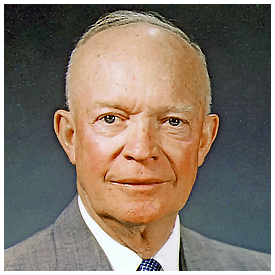For those who believe that the Confederate States of America and the men and women who pledged allegiance to that constitutionally established government are somehow illegitimate and not worthy of honor and protection by the American government, below are laws and proclamations honoring them and their service and which proclaim that they were equal in honor and worthiness to those who served the Union cause.
Historic City News readers should take note of such official proclamations by the Government of the United States removing all claims against the Confederacy and those who served it. Further, it protects, defends and honors their symbols, monuments and heroes. In other words, the current assault upon all things Confederate is contrary to the laws of the United States of America and must be resisted vigorously.
- Congressional Act of March 9, 1906
(PL 38, 59th Congress, Chap. 631-34 Stat. 56)
This act authorized the furnishing of headstones for the graves of Confederates who died, primarily in Union prison camps and were buried in Federal cemeteries, formally reaffirming Confederate soldiers as military combatants with legal standing. It granted recognition to deceased Confederate soldiers commensurate with the status of deceased Union soldiers.
- PL 810, 17th Congress February 26, 1929
(45 Stat 1307 – 38 U.S. Code, Sec. 2306)
This law, passed by the U.S. Congress, authorized the “Secretary of War to erect headstones over the graves of soldiers who served in the Confederate Army and to direct him to preserve in the records of the War Department the names and places of burial of all soldiers for whom such headstones shall have been erected”, broadening the scope of recognition further for all Confederate soldiers to receive burial benefits equivalent to Union soldiers. It authorized the use of U.S. government (public) funds to mark Confederate graves and record their locations.
- PL 85-425: Sec. 410 Approved May 23, 1958
Confederate Iron Cross
(US Statutes At Large Volume 72, Part 1, Page 133-134)
The Administrator shall pay to each person who served in the military or naval forces of the Confederate States of America during the Civil War a monthly pension in the same amounts and subject to the same conditions as would have been applicable to such person under the laws in effect on December 31, 1957, if his service in such forces had been service in the military or naval forces of the United States.
Other Considerations:
1. Following the Spanish-American War, which saw former Confederates serving under US colors, the world began to look at us as a “super power.”
2. Recognizing the need to bind old wounds, the government and the north started giving back flags and other captured equipment.
3. Confederate Veterans were enlisted to teach our “doughboys” the Rebel Yell battle cry. Unfortunately, they could not duplicate the three-tone yell.
4. President Wilson appointed former disenfranchised Confederates to official posts such as Post Master General.
5. President Roosevelt sent the President’s own Marine Band to play at the only “out of South” UCV Reunion in Colorado. He also gave remarks at the unveiling of the Robert E. Lee memorial statue in Dallas, Texas – recognizing Lee as one of America’s greatest Christians and one of America’s greatest gentlemen.
6. Southern men distinguished themselves in every war following the American Civil War, with more men serving from the South than any other sector of the country.
7. This reconciliation period led up to the Congressional Act of 9 March 1906, U.S. Public Law 810 Approved by 17th Congress 26 February 1929, and the final crown of reconciliation with U.S. Public Law 85-425: Sec. 410 Approved 23 May 1958.
 A proclamation delivered by the President of the United States, Dwight D. Eisenhower, on December 6, 1960, acknowledged that the years 1961 to 1965 marked the 100th anniversary of the American Civil War.
A proclamation delivered by the President of the United States, Dwight D. Eisenhower, on December 6, 1960, acknowledged that the years 1961 to 1965 marked the 100th anniversary of the American Civil War.
Both sections of our now magnificently reunited country sent into their armies men who became soldiers as good as any who ever fought under any flag. Military history records nothing finer than the courage and spirit displayed at such battles as Chickamauga, Antietam, Kennesaw Mountain, and Gettysburg. That America could produce men so valiant and so enduring is a matter for deep and abiding pride.
The same spirit on the part of the people at home supported and strengthened those soldiers through four years of great trial. That a Nation which contained hardly more than thirty million people, North and South together, could sustain six hundred thousand deaths without faltering is a lasting testimonial to something unconquerable in the American spirit. And that a transcending sense of unity and larger common purpose could, in the end, cause the men and women who had suffered so greatly to close ranks once the contest ended and to go on together to build a greater, freer, and happier America must be a source of inspiration as long as our country may last.
By a joint resolution approved on September 7, 1957 (71 Stat. 626), the Congress established the Civil War Centennial Commission to prepare plans and programs for the nationwide observances of the one-hundredth anniversary of the Civil War, and requested the President to issue proclamations inviting the people of the United States to participate in those observances.
Now, Therefore, I, Dwight D. Eisenhower, President of the United States of America, do hereby invite all of the people of our country to take a direct and active part in the Centennial of the Civil War.
I request all units and agencies of government–Federal, State, and local–and their officials to encourage, foster, and participate in Centennial observances. And I especially urge our Nation’s schools and colleges, its libraries and museums, its churches and religious bodies, its civic, service, and patriotic organizations, its learned and professional societies, its arts, sciences, and industries, and its informational media, to plan and carry out their own appropriate Centennial observances during the years 1961 to 1965; all to the end of enriching our knowledge and appreciation of this momentous chapter in our Nation’s history and of making this memorable period truly a Centennial for all Americans.

